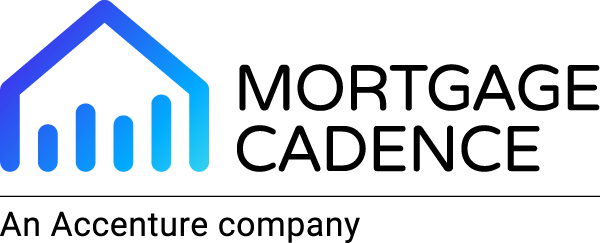In the 20 years we’ve been providing
lending technology, we’ve seen the digital process get thin-sliced by new
software offerings, ultimately creating unintended consequences for lenders and
borrowers alike.
Mortgage loan originators are now tasked
with more than just running profitable home finance companies - today they must
also understand how separate mortgage technology components fit together and
how they exchange data and keep everything in synch. It’s overly complex, which
probably explains why consulting fees are on the rise.
It’s ironic that the efficiencies and
improved productivity that a great technology platform can deliver are many
times lost when you bolt things together like this. It’s akin to taking an old
flip-phone and strapping a camera, calculator, audio recorder and GPS unit to
it and wondering why you don’t end up with a smartphone - that’s just not the
way it works.
Our position in the market has never
wavered. We continue to believe that high performance lending happens when your
team is working on a complete system where all functionality occurs on one
platform with a single system of record.
Our long-running Benchmark Study bears this out. Serial high performers,
those chalking up the highest productivity, lowest cost to close AND highest
market shares do so on our comprehensive, lead-to-loan platform.
In other words, from the moment the
borrower visits your website to shop for a loan all the way through to
underwriting and beyond, every action occurs on the same platform, saving data
to a single system of record. That’s how you improve your team’s productivity
and grow your business. Anything else is friction.
The industry’s pendulum has swung back to
this way of doing business – and in this short article, we’ll tell you what the
perfect solution looks like in today’s lending landscape.
Technology’s
swinging pendulum
Everyone knows that the mortgage industry
is cyclical. Like many other industries, home finance tends to rise and fall
with the economy, the rise of new generations of buyers and fluctuations in the
capital markets.
Likewise, innovation has its own cycle.
Solutions are presented in accordance with the technologies available at the
time, the real and perceived needs of users in the current environment and the
readiness of buyers to accept new ideas. One ‘new’ innovative idea almost
always breeds similar ‘new’ innovative ideas.
In some cases, as with the mortgage
lender’s loan origination technology, innovation makes advances in fits and
starts. As it does so, lenders must choose if and how they will adopt and apply
the new solutions.
In the very early days, when automation
was a concept new to the industry and paper documents involved pencils instead
of a printers, the LOS was an innovation that lenders were eager to adopt
because they needed a central database of record where all of their loan
information could reside. The data store was the big innovation at that time.
As more of the process fell under the
spell of automation wizards, new tools emerged that lenders were keen to adopt.
Some LOS providers made the effort to integrate these tools into their systems,
but this was hard work. Innovations were hard-coded and brittle. Any change in
either system threatened the connection. There was a big debate during this era
about the virtues of best-of-breed, a collection of individual tools, or an
all-in-one system, where the LOS developer made the decisions about what tools
to include.
That debate raged for years, with some
lenders betting everything on a system they cobbled together themselves and
others swearing by the single systems that they claimed met all their needs.
As opposed to a time when all the lender
had was a simple LOS, the pendulum swung to the opposite extreme, giving
lenders the opportunity to have anything they wanted and work with anyone they
wanted.
Those were great days for technologists.
Any innovation could find a home and lenders bought all kinds of technological
tools. If only a small fraction of these tools fulfilled their developer’s
promises, the loan volume the market was providing made the ROI acceptable.
But those days are over.
The
market changes that changed everything
The financial crash that ushered in the
current era of home mortgage lending has been blamed on many actors and
activities, but there’s no doubt it could not have happened without an
always-on, global information network. When concerns about the value of the
assets being sold into the secondary market sparked a flame that rushed through
the global marketplace, it was all anyone could do to keep the entire system
from burning down.
Could the same thing have happened a
decade before? Unlikely. But with great pain often comes good things. This
global network accomplished other things as well.
First, it changed the way technologists
connected disparate software systems. Data had never found it so simple to flow
from one platform to another. Over the next decade, it changed everything about
the way we integrated our technologies.
Second, it changed the way consumers
transacted business. From micropayments for MP3 files of their favorite bands
to add-ons for the most popular video games to buying virtually anything on
Amazon, consumers learned to spend money online.
Finally, and most recently,
microservices-based software architectures have changed the way technologists
solve problems. It’s no longer necessary to connect disparate systems together
if all you need is certain data fields to move from one tool into the database
of record.
Now, instead of deciding which tools the
lender must combine to create the perfect system, all they need to do is decide
what information is required in order to process the loan and move it to the
closing table. It doesn’t matter where the data comes from or what system
delivers it, as long as it’s accurate.
The question now is not what tools
constitute the best-of-breed, but rather what trusted partner can pull together
all the data needed to originate quality loans at the lowest cost in the
shortest time. The pendulum has now swung back.
From
LOS to Digital Lending Platform: Why the System of Record is the Critical
Decision Every Lender Must Make
The nation’s best lenders resist the urge
to spend resources procuring technology to fill in gaps left by their existing
loan origination system and instead seek out the right system of record and
then focus all their efforts on the borrowers. That’s how lenders build stronger
businesses.
The lender’s Digital Lending Platform
provider must be the trusted financial technology partner tasked with finding
the best tools in the market to provide the accurate data the lender needs to
close loans faster and at a lower cost. And the best, including Mortgage
Cadence, offer their lenders a novel solution: provide a comprehensive
lead-to-loan platform built on a dynamic API surface.
Everything a lender needs should come in
one digital lending platform. Anything a lender wants to add connects through
existing APIs. Any tool that doesn’t make this possible for the lender is
simply adding friction.
Our contention is that any lender who
spends time evaluating lending technology beyond the Digital Lending Platform
in the coming decade will fall behind those who are spending those same
resources on building strong lending teams, constantly evolving processes to
maximize efficiency and experience and building stronger borrower
relationships.
Any technology vendor still trying to
stoke the best-of-breed versus all-in-one debate in the 2020s is practicing
distraction communication. It’s no longer a relevant conversation and it’s a
waste of time for any lender serious about building a more competitive mortgage
business in the coming year.
The successful lender will
focus on the borrower in 2020 and beyond. To find out why customer service and
borrower satisfaction are the results of your people, your process AND your
technology, continue this conversation with us on our blog, or give us a call.



